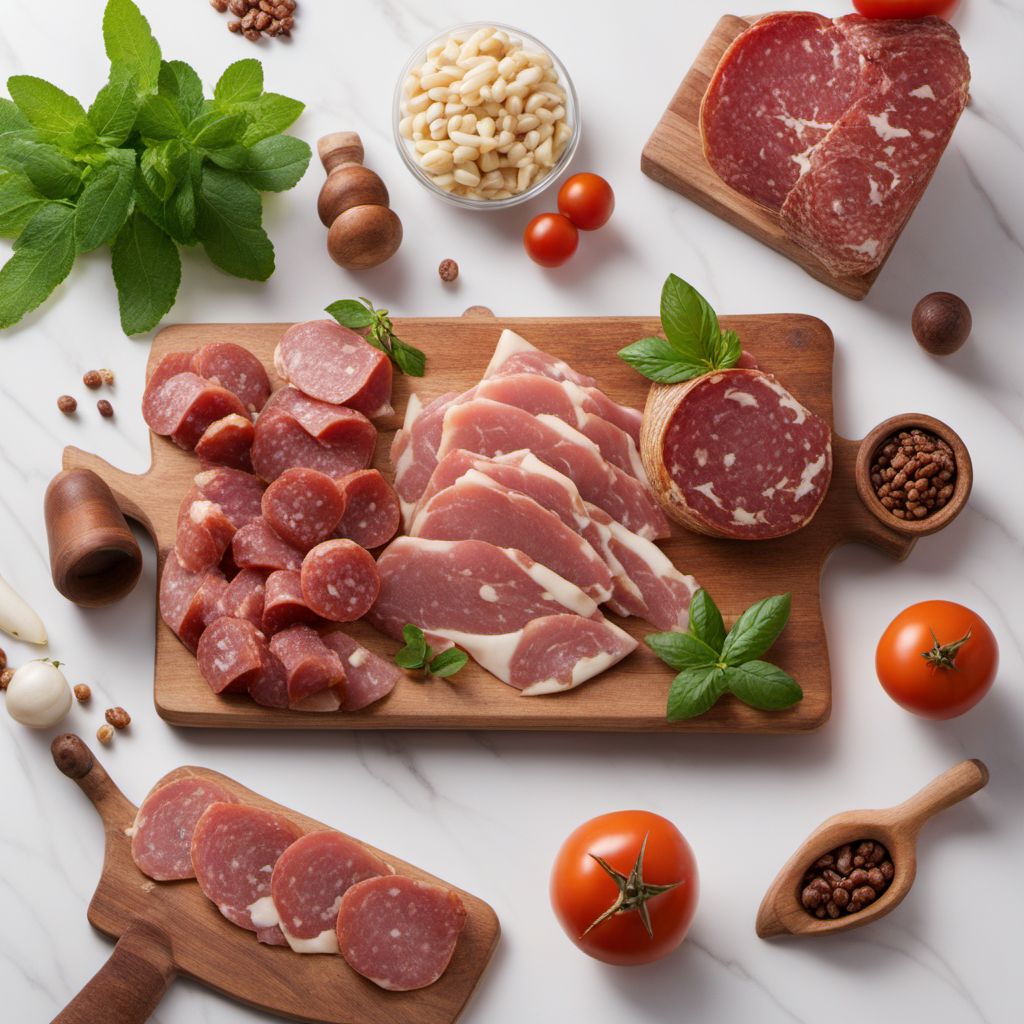
Ingredient
Matured charcuterie products for cooking
The Flavorful Secret
Matured charcuterie products, such as cured meats and sausages, are prized for their intense flavors and unique textures. These products are made from carefully selected cuts of meat that are seasoned, cured, and aged to develop complex flavors. They add depth and richness to a wide range of dishes, from pastas and stews to sandwiches and charcuterie boards.
Origins and history
The art of charcuterie dates back centuries and has its roots in preserving meat before the advent of refrigeration. It originated in Europe, particularly in countries like France, Italy, and Spain, where it became an integral part of the culinary traditions. Today, charcuterie products are enjoyed worldwide and have gained popularity for their distinct taste and versatility in cooking.
Nutritional information
Matured charcuterie products are a good source of protein, vitamins, and minerals. However, they are also high in sodium and saturated fats, so they should be consumed in moderation as part of a balanced diet. It is important to read the labels and choose products that are made with high-quality ingredients and minimal additives.
Allergens
Matured charcuterie products, such as cured meats and sausages, may contain allergens such as gluten, soy, or dairy, depending on the specific ingredients used in their production. It is important to check the labels and consult with a healthcare professional if you have any known allergies or dietary restrictions.
How to select
When selecting matured charcuterie products, look for ones that have a rich color and a firm texture. They should have a pleasant aroma and be free from any signs of spoilage, such as mold or off odors. It is best to purchase these products from reputable sources, such as specialty delis or butcher shops, to ensure quality and safety.
Storage recommendations
To maintain the freshness and quality of matured charcuterie products, it is important to store them properly. Most cured meats and sausages can be stored in the refrigerator, tightly wrapped in butcher paper or plastic wrap. Some products, like dry-cured hams, may require special storage conditions, such as hanging in a cool, dry place. It is best to follow the specific storage instructions provided by the manufacturer or consult with a knowledgeable professional.
How to produce
Producing matured charcuterie products at home requires specialized knowledge, equipment, and controlled environments. It is best to leave the production of these products to professional charcutiers who have the expertise to ensure safety and quality. However, amateur cooks can experiment with using these products in their dishes to add depth and complexity of flavors.
Preparation tips
Matured charcuterie products can be used in various ways in cooking. They can be sliced and added to pasta dishes, stews, or risottos to infuse them with rich flavors. They can also be used as a topping for pizzas, folded into omelets, or incorporated into sandwiches and charcuterie boards. The intense flavors of matured charcuterie products pair well with ingredients like cheese, olives, pickles, and crusty bread.
Culinary uses
Matured charcuterie products are commonly used in European cuisines, particularly in French, Italian, and Spanish dishes. They are often featured in dishes like pasta carbonara, coq au vin, antipasti platters, and tapas. Matured charcuterie products are also popular in charcuterie boards, where they are served alongside cheeses, fruits, and other accompaniments.
Availability
Matured charcuterie products are commonly available in countries with a strong tradition of charcuterie production, such as France, Italy, Spain, and Germany. They can also be found in specialty stores and gourmet markets in other regions. The availability may vary depending on the local culinary culture and demand for these products.
